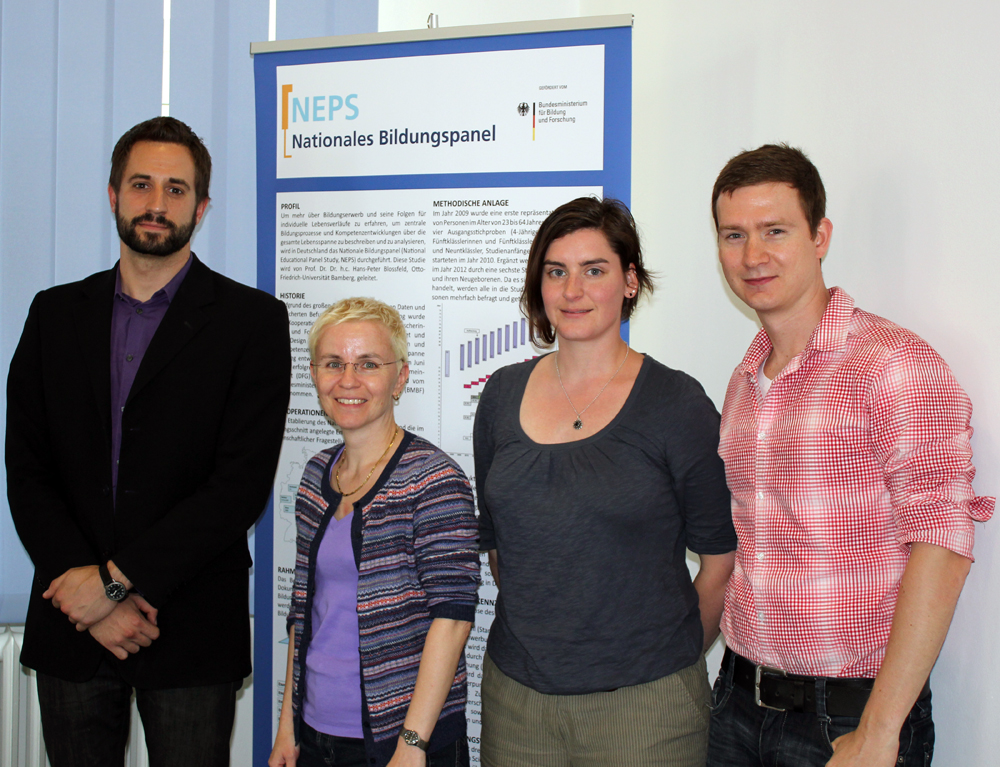
In the photo (from left to right): Manuel Munz, Dr. Jutta von Maurice, Dr. Silke Schneider, Dr. Jan Skopek
At the beginning of her lecture, Dr. Schneider presented different definitions and concepts regarding the measurement of educational attainment. Furthermore, she elaborated on the question which kinds of educational achievements can or should be taken into consideration when it comes to the measurement of those achievements (intermediate diploma, vocational preparatory schemes etc.). Also, she gave some important advice concerning the configuration of items to measure educational achievements adequately by referring to a presentation on the demographic standards within this field. In this presentation, she differentiated between general education in schools and vocational education. She focused especially on the different educational qualifications in the area of higher education, in particular, due to the Bologna-reform.
Based on these insights, the most important national and international classifications and scales to harmonize different forms of educational attainment were presented with their special characteristics. The main focus was set on the “International Standard Classification of Education 2011 (ISCED 2011)“. Dr. Schneider outlined both essentialcharacteristics as well as advantages and disadvantages of this classification. Furthermore, she presented her own procedures to measure educational attainment which partially vary from the “ISCED 2011”-scheme and have been designed to solve problems concerning their implementation using, especially, the example of the German educational system. In addition to this, further examples concerning the (construct-)validation of classifications were deeply interesting.